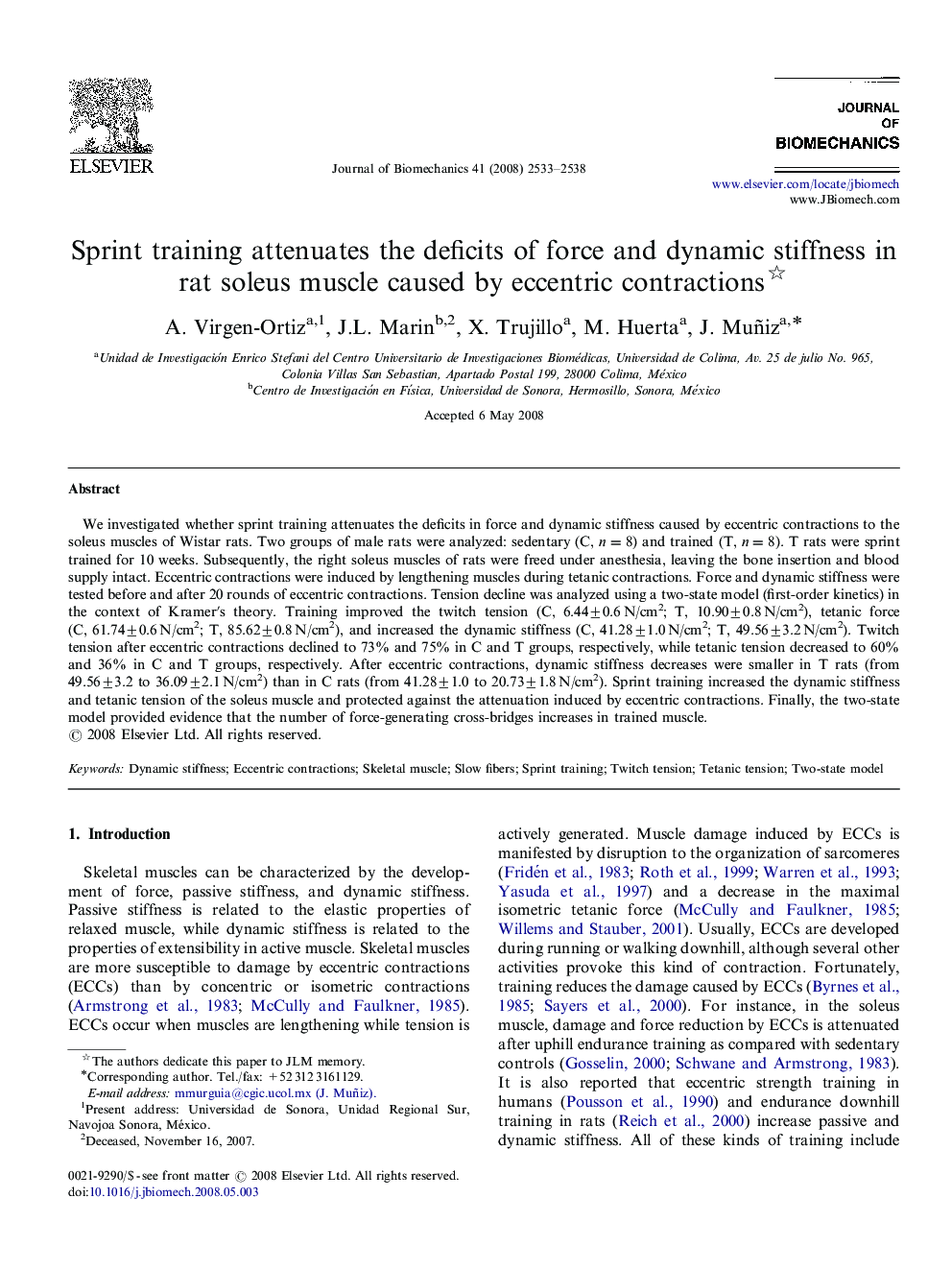| Article ID | Journal | Published Year | Pages | File Type |
|---|---|---|---|---|
| 874968 | Journal of Biomechanics | 2008 | 6 Pages |
We investigated whether sprint training attenuates the deficits in force and dynamic stiffness caused by eccentric contractions to the soleus muscles of Wistar rats. Two groups of male rats were analyzed: sedentary (C, n=8) and trained (T, n=8). T rats were sprint trained for 10 weeks. Subsequently, the right soleus muscles of rats were freed under anesthesia, leaving the bone insertion and blood supply intact. Eccentric contractions were induced by lengthening muscles during tetanic contractions. Force and dynamic stiffness were tested before and after 20 rounds of eccentric contractions. Tension decline was analyzed using a two-state model (first-order kinetics) in the context of Kramer′s theory. Training improved the twitch tension (C, 6.44±0.6 N/cm2; T, 10.90±0.8 N/cm2), tetanic force (C, 61.74±0.6 N/cm2; T, 85.62±0.8 N/cm2), and increased the dynamic stiffness (C, 41.28±1.0 N/cm2; T, 49.56±3.2 N/cm2). Twitch tension after eccentric contractions declined to 73% and 75% in C and T groups, respectively, while tetanic tension decreased to 60% and 36% in C and T groups, respectively. After eccentric contractions, dynamic stiffness decreases were smaller in T rats (from 49.56±3.2 to 36.09±2.1 N/cm2) than in C rats (from 41.28±1.0 to 20.73±1.8 N/cm2). Sprint training increased the dynamic stiffness and tetanic tension of the soleus muscle and protected against the attenuation induced by eccentric contractions. Finally, the two-state model provided evidence that the number of force-generating cross-bridges increases in trained muscle.
